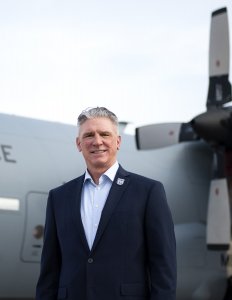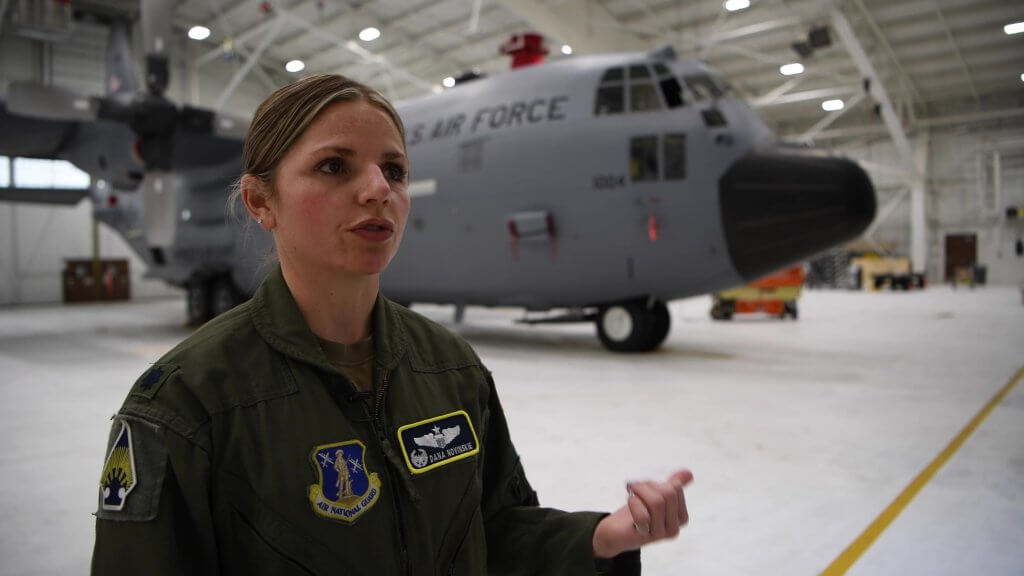
The first federally-recognized Air National Guard unit is marking 100 years since it took to the skies.
Retired Brig. Gen. Greg Haase, who served as commander of the 109th Airlift Squadron in 1998, is a living history book of the formative years of the unit’s century of service. The squadron, which is part of the 133rd Airlift Wing in Minnesota, was previously known as the 109th Observation Squadron. It was formed as the inaugural air unit of the National Guard on Jan. 17, 1921.
Haase said it took the imagination and grit of three military leaders to convert Minneapolis speedway into an airfield and loosely organize a military-like unit. Brig. Gen. Walter Rhinow, Lt. Col. William Garis, and Capt. Ray Miller are credited with this achievement after they took off from Curtiss Field in Minnesota, flying hundreds of miles in a rented Oriole biplane to Washington, D.C., with little to no air support. The trip was to lobby for the formation of a flying squadron — and it was successful.
Throughout its history, the 133rd Airlift Wing has served in every major conflict from World War II to current-day missions, including domestic support after the attacks of Sept. 11. Haase details some of the significant milestones.
1931: Capt. Miller (known as the godfather of the Minnesota Air Guard) led the largest aerial event at Wright Field in Dayton, Ohio with 19 other states
1941: World War II
1951: Korean conflict
1961: Became operational in the C-97 and were activated for the Berlin crisis
1971: Transitioned to the C-130 A model
1981: Transitioned to the C-130 B model
1991: Desert Storm
2001: Provided domestic support in the wake of the attacks of Sept. 11
(Courtesy photo submitted by the Minnesota Air National Guard Historical Foundation)
Haase added that when the trio returned from their trip in 1921, Garis remarked at the end of a seven-page letter that “this aviation thing is going to be the wave of the future.” He was right. The Air National Guard now stretches across all 50 states, Puerto Rico, Guam, Virgin Islands, and Washington, D.C., with more than 107,700 personnel and 1,800 units, according to the Air National Guard website.
The Minnesota Air National Guard Historical Foundation, which Haase serves with, continues its work of piecing together the rich 100-year history. He says he started digging into its background when he was the wing commander.
“We were trying to pull off the 90th and were looking for original documentation. When we started digging through this history and piecing it together, it was very compelling. It was letters from Miller to his wife from World War II … he detailed his trips to Berchtesgaden and Eagle’s Nest [in Germany] — reading through the letters you captured this intense emotion that must have existed in every aviator in World War II. It just struck you and you wanted to know more about this unit, about this guy — these pioneers that had so much imagination and grit,” he said.
Today, he continues to comb through letters, after action reports from deployments, and speeches to catalog the unit’s story. Simultaneously, the op tempo for current airmen has not slowed down, especially in the wake of unforeseen circumstances that emerged in 2020.
Lt. Col. Dana Novinskie, commander of the 109 Airlift Squadron, explained that her unit had just returned from a deployment in March 2020 as the coronavirus pandemic was spreading in the U.S. and internationally. She says it forced leaders to be adaptable and learn how to streamline processes like training.
“We came back and the pandemic started and we were all called to state activation duty by our governor — the entire Minnesota National Guard. … It’s been nonstop for us, and throughout that time we’ve had the pilots flying and it’s been incumbent on us to still accomplish the mission, still accomplish training. We’ve had to innovate and find new ways of doing things.”
Novinskie made history herself when she became the first female flying squadron commander in the wing’s history. Her 16 years of time in service has been split evenly between active duty and the Minnesota National Guard.
“I wasn’t necessarily always pining for this career field, but it’s worked out and I love it. I was always interested in aviation and in college I was an aerospace engineer major,” she said. “It was more on the space side initially that I thought I was going to go into and then I started down the path of ROTC and I had to work really hard to get a height waiver — which the Air Force is starting to do away with now because so many female pilots are on waivers.”
She also flies on the civilian side of her career with Delta Airlines.
Reflecting on the 100-year celebration for her squadron, Novinskie said in order to know where you’re going it’s important to know where you’ve been—adding even more so for members of the National Guard who have less-transient careers than their active-duty counterparts. She revels in the progress that has been made across the Air National Guard.
“Knowing that we are the first federally-recognized Air Guard unit and then now Air National Guard units span coast to coast across our country, that’s huge. To think it started with just one person and a vision — that pre-dates the Air Force really. And then we have a really high op tempo and a robust unit here. We’re very active whether we’re deployed or it’s a non-deployment year — we’re very busy, so to see how far we’ve come and different things historically that we’ve been a part of, conflicts, wars, 9/11, domestic operations, and I think that knowing the history and building upon that is important in our unit.”
She added that briefing that heritage is even a key part of what recruiters do so that prospects understand the “legacy they have to live up to.” Novinskie said that proud history is chief among the reasons that generation after generation of citizens choose to serve in the Guard.
Earlier this year, the squadron marked its anniversary by transporting military members to Washington D.C. for inauguration support — a fitting gesture given that is a similar path to the masterminds behind its founding. It is one of several missions on it calendar year that includes a NORAD exercise with international partners, participation in Swift Response in Estonia, and what Novinskie described as bigger ticket exercises that will be balanced with unexpected domestic operations that may arise.

